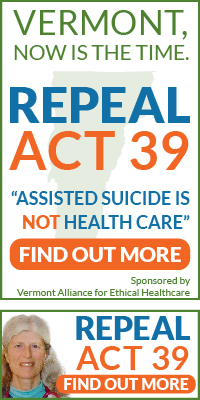Below, we link to a good article on the Brittany Maynard case, written before she committed assisted suicide but just as relevant now, especially as we await the edited death video that will almost certainly be released by Compassion and Choices and People Magazine. The article discusses how the Maynard case is a “textbook example” of “framing”, a marketing technique in which complex issues are purposely presented “in overly simplistic, emotionally appealing ways”, ways which “can distract busy citizens from the most important issues related to a topic.” This is a well-known sales strategy used in politics, in which, “By substituting flash for substance, savvy consultants can manipulate public opinion to win important changes in public policy.”
The Maynard case has been framed in terms of an individual’s “right” to avoid suffering, yet, as the article points out, every individual already has access to drugs capable of “helping” that individual to die; this is a simple fact, the evidence of which is the high unassisted suicide rate that has led to suicide prevention efforts worldwide. It is not access to suicide that Compassion and Choices and People are selling but law establishing public policy, policy which affects everyone, not only an individual. Yet speaking this simple truth over the past few weeks has resulted in attempts to silence the speakers, including one by Maynard herself, who told a well-known palliative care physician who has helped many brain cancer patients die peacefully and comfortably that he knew nothing about her case and asked him to stop talking about the campaign she herself had made public and on which she was even then speaking publically. The comments on some of the thousands of articles on the case have been vicious attacks.
According to the article, the real issue behind the sales pitch is not whether Brittany Maynard should have had to suffer if she did not want to (because she could have avoided suffering by accepting palliative care or by taking responsibility for her own private suicide), but whether some kinds of lives are worth living and some are not. The aim is to achieve public consensus that some are not, to make people think “I’d rather be dead” than….disabled, sick, elderly, etc. etc..
By calling our attention to the over-simplification that happens when one person’s case is extrapolated to apply to all of us (especially when the presentation of that case is accomplished through beautiful people, puppies, soft music, and spotless rooms in which sunlight falls on a peaceful looking bed), the author hopes to caution against the rapid and shallow acceptance of a policy with many ramifications. He calls for vigorous and honest debate, to enable people to see through the salesmanship trying to steer us down a path in which policy pushes particular kinds of people to feel “a duty to die”. To that, True Dignity would add that those particular kinds of people are those that need care and that “a duty to die” is only the tip of the iceberg. History offers plentiful evidence of other people’s and the state’s deciding who must die and acting on that decision without consulting those people. We should realize that the only way to preserve individual liberty is to forbid states or any individuals other than the subject him or herself from getting involved in suicide in any other way than prevention. We should especially forbid involvement by doctors, because of the power they have by virtue of their expertise and the respect in which they are held.
http://www.thepublicdiscourse.com/2014/10/14020/

